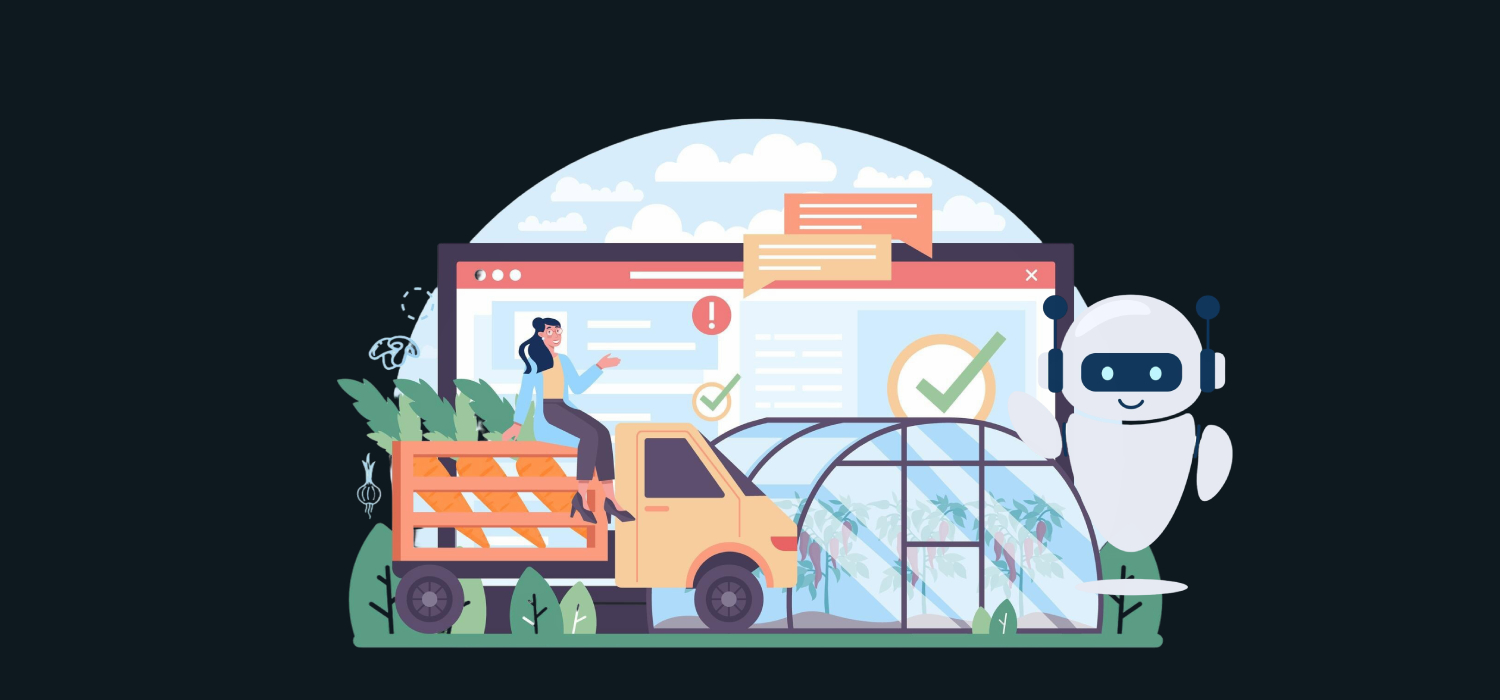RPA Benefits in Transportation Industry: Improving Accuracy, Speed, and Compliance
In transportation, this means dealing with everything from booking shipments to tracking vehicles. Companies in trucking, shipping, and airlines deal with piles of paperwork and data entry every day. RPA in transportation steps in to take over those jobs, letting workers focus on bigger issues like planning routes or fixing problems on the road.
The global logistics automation market was valued at USD 34.56 billion in 2023 and is projected to grow at a CAGR of 14.7% from 2024 to 2030, reaching USD 90 billion by the end of the period. (Grand View Research)
This approach fits well in transportation because the sector moves fast and handles tons of details. A bot can check cargo manifests or update delivery schedules without getting tired. Over time, this builds better ways to manage operations. The main gains come in three areas: getting details right, moving things along quickly, and sticking to the rules set by governments and partners.
What Makes Accuracy a Big Win with RPA in Transportation?
Accuracy matters when a small mistake can delay a whole fleet or cost extra money. RPA cuts down on human errors by following set steps exactly every time. For example, when entering data from invoices into systems, a bot reads the numbers and types them without mixing up digits.
Here are some key ways Robotic Process Automation in transportation improves accuracy:
- Data Entry Checks: Bots scan forms for missing info or wrong formats before saving. This stops bad data from spreading through the system.
- Inventory Matching: In warehouses, RPA compares stock lists against incoming goods. It flags differences right away, so teams fix them on the spot.
- Route Calculations: Software pulls weather and traffic info, then adjusts plans. No more guessing based on old notes.
To show this clearly, consider a simple comparison:
| Task Without RPA | Task With RPA |
| Manual review of shipping labels, prone to oversight | Automated scan and verification, catching 100% of mismatches |
| Spreadsheets updated by hand, leading to copy errors | Bots pull data from multiple sources and cross-check entries |
| Daily logs filled out at shift end, with forgotten details | Real-time logging as events happen, keeping records complete |
These changes mean fewer mix-ups, like sending the wrong package to a customer. Workers spend less time correcting issues and more on actual driving or loading.
Nearly 70% of logistics companies using RPA report enhanced process quality with significantly reduced errors. (Savvycom, 2025)
How Can RPA Speed Up Daily Work in Transportation?
Transportation runs on tight schedules. Delays in processing orders or approvals can push back deliveries by hours. RPA in transportation speeds things up by working around the clock and handling multiple tasks at once. A bot processes a hundred payment requests in minutes, something that might take a team all afternoon.
Specific speed boosts include:
- Order Processing: When a customer places a request, RPA pulls details from emails or portals and books the truck instantly.
- Vehicle Tracking: Bots monitor GPS signals and update status reports every few minutes, without waiting for manual checks.
- Payment Handling: Invoices go out automatically after delivery confirmation, cutting the wait for billing cycles.
Think about a typical workflow. Without automation, a dispatcher might juggle calls, emails, and logs, slowing the whole chain. With RPA, the bot handles the routine parts, freeing the person to coordinate with drivers directly. This setup keeps trucks rolling and reduces idle time at docks.
In What Ways Does RPA Keep Transportation Operations in Line with Rules?
Staying within legal and partner guidelines is non-negotiable in transportation. Fines or lost contracts happen when records slip. Robotic Process Automation in transportation helps by building checks into every process, making sure nothing falls through the cracks. For instance, it can flag shipments that need special permits and pause until paperwork clears.
RPA benefits in transportation industry include:
- Document Tracking: Bots log every step of a cargo’s journey, creating audit trails that match required formats.
- Safety Reporting: After an incident, RPA gathers data from logs and files reports to authorities without delay.
- Partner Agreements: It reviews contracts for terms like delivery windows and alerts if a route risks breaking them.
A quick overview in table form:
| RPA Use Cases in Transportation | RPA Role | Outcome |
| Permit Management | Auto-checks against databases for needed approvals | Avoids holds at borders or ports |
| Log Maintenance | Compiles hours-of-service data for drivers | Meets federal logging standards easily |
| Environmental Checks | Scans loads for restricted materials | Prevents violations during inspections |
This built-in oversight means companies face fewer surprises during reviews. Teams can trust the system to handle the details while they handle the road.

Conclusion
RPA brings real changes to transportation by tackling accuracy, speed, and rule-keeping head-on. It turns slow, error-filled tasks into smooth operations. Fleets move faster, costs drop from fewer mistakes, and partnerships strengthen with solid records. As the industry grows with more global trade and tech, tools like RPA become standard for staying ahead. Start small, pick one process like invoice handling, and watch the benefits add up. Over time, it shapes a stronger setup for handling tomorrow’s challenges.
FAQs
What exactly does RPA involve in a transportation setting?
RPA uses bots to mimic human actions on computers, like clicking buttons or filling forms. In transportation, it often covers booking, tracking, and reporting.
Does RPA replace jobs in trucking or shipping?
No, it takes over repetitive work so people can shift to planning, customer service, or maintenance roles that need human judgment.
How long does it take to set up RPA for a fleet?
Setup varies by company size, but basic bots can run in weeks. Testing ensures they fit your workflows without glitches.
Can small transportation firms use RPA too?
Yes, even with limited budgets. Cloud-based options mean no big hardware buys, and gains show up quickly in saved time.
What if a bot makes an error in a critical task?
Bots follow programmed rules, so errors are rare. Regular reviews and human oversight keep things on track, with backups for key decisions.

 contact
contact

 By
By 


